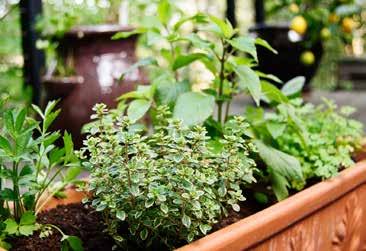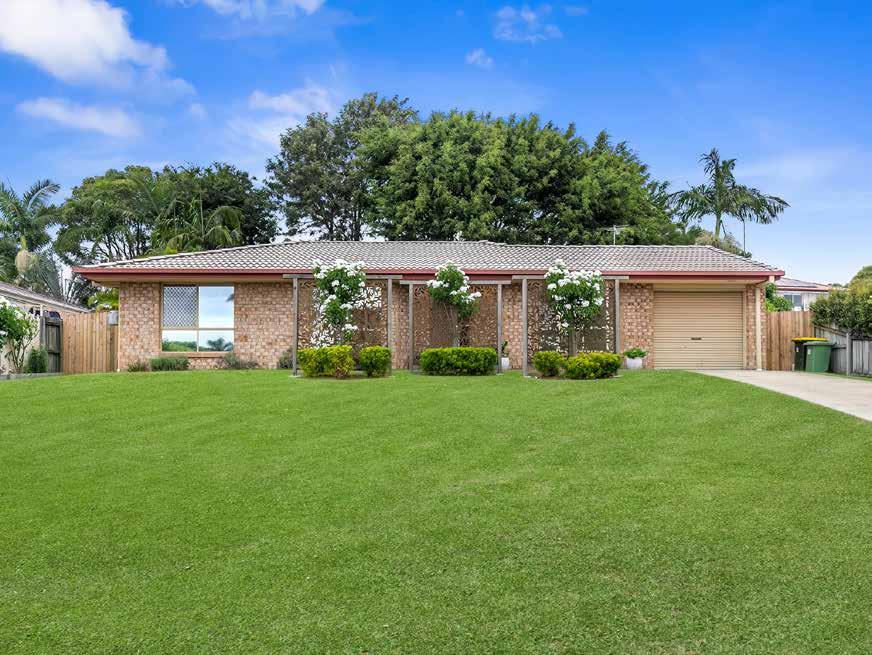
2 minute read
ISLAND G SNEDRA
A lot of us have spaces around the home which are either paved or not always suitable for putting plants in the ground. You might be in a unit or town house without a private garden, or renting and want your plants to come with you if you move. For whatever reason, container gardening allows us to enjoy the many benefits of having our plants closer to our living spaces.
Today, we're looking specifically at planter boxes and pots for areas that receive shade for much of the day. In April, we'll look at sun-loving plants, and in May - alternative plantings like bonsai, hanging baskets, terrariums, etc.
Advertisement


For pots and planter boxes - firstly, to ensure dirt and water don't stain tiles, flooring, etc., put plant bases under your pots. With planter boxes, instead of filling the box with soil, pots with bases can be placed side by side in the box.
When choosing the right plants at your local nurseries, look for plants that are already being displayed in the shade. When buying from markets, ask your stall holders which plants are best for the locations they'll be placed in.
A lot of shade plants aren't that thirsty, so it's fine to plant two or more in the same pot, usually with taller plants at the back and shorter ones at the front. Combining plants together often produces a stunning effect, resulting in a variety of textures and colours.

Here's a list of just a few favourites that do well in the shade in our region. Many of these will flower, even in winter, ensuring colour all year-round.
Tall (Up to one metre, or can be pruned once or twice a year to remain under a metre).
Azalea, elephant ears, ferns, monstera, peace lily, philodendron (rojo congo looks lush), poincettia, raphis palm.
Short -
(Bigger than ground cover and less than 40cm).
Bleeding heart, cyclamen, hydrangea, impatiens (Busy lizzie), lobelia, maidenhair fern, peperomia, plectranthus, zanzibar gem (often best planted alone as they only need water once a month).
Trailing / ground cover -
(Ideal for the front edges of your pots or boxes).
African violet, alyssum, begonia, ivy (various small varieties - e.g. devil's ivy, mint, petunia, rabbit's foot fern.
Whichever plants you choose, your new green spaces will be a beautiful addition to your home. Happy planting. I wish you all a happy Easter and look forward to seeing you in issue 189 on 21st April.


LIVING IN QUEENSLAND CAN MEAN UNEXPECTED WEATHER CAN OCCUR ANYTIME AND OFTEN WITHOUT MUCH WARNING. MAKE SURE YOUR HOME AND FAMILY ARE PREPARED FOR UNEXPECTED WEATHER.

• keep gutters, downpipes and drains clear.
• remove any tree branches overhanging or close to your home.
• identify loose objects in your yard and on your balcony, such as outdoor furniture and toys that should be put away or secured if a storm approaches.
• ensure your home, contents and car insurance is adequate and current.
• check your household's flood risk using the council's free flood check report.
• identify the safest room in which to shelter during a storm.
• learn how to safely turn off your power, water and gas.
• prepare an Emergency Plan for your pets and ensure that they are registered and microchipped for easy identification. Ensure your Emergency Plan includes livestock.
• prepare an Emergency Kit containing a first aid kit, drinking water, torches, canned food and pet needs that you can access at a moment's notice.
• get to know your neighbours - having someone close by to call on during times of need or to borrow resources such as a ladder can be helpful.
• sign up for Moreton Alert to receive free severe weather alerts and warnings.











